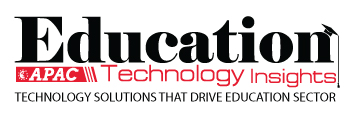THANK YOU FOR SUBSCRIBING
Be first to read the latest tech news, Industry Leader's Insights, and CIO interviews of medium and large enterprises exclusively from Education Technology Insights
Transitioning to E-learning
Dr. Sinjini Mitra, Professor, CSUF College of Business and Economics
 Dr. Sinjini Mitra, Professor, CSUF College of Business and Economics
Dr. Sinjini Mitra, Professor, CSUF College of Business and EconomicsSince the pandemic started in March 2020, I have taught only online courses. I had prior online teaching experience, so the ‘forced’ transition to virtual learning was not as challenging to me as it probably was for most faculty members who had never taught an online course before that. The main concern at the beginning of online learning was how to effectively engage students in the virtual classrooms and how it was going to impact student learning, success, and graduation rates eventually.
A couple of strategies that have proved very helpful in my online teaching experience include maintaining regular communication with students, sending timely reminders, and providing regular feedback on their work. These helped students to keep on track with their assigned work, complete and submit assignments on time, and prepare for exams. Responding to student emails promptly, having flexibility with respect to holding additional office hours (via Skype or Zoom), and generally being available to offer help and support when needed went a long way in motivating students to put in the required effort and achieve success at the end of the semester.
Providing a variety of learning methods such as lecture slides, lecture videos (with closed captioning), interactive quizzes and assignments that provide immediate feedback, and other supplementary videos from external sources are also required today to cater to the needs of a diverse group of students who have different learning styles. This ensures that our teaching methods are inclusive and accessible, which facilitates a satisfactory learning environment for all.
One particular challenge to adopting the e-learning platform among educators is perhaps the lack of personal interaction among faculty and students. Some solutions or alternatives are available for that in the online setting, such as online discussion forums (that are usually integrated with most LMSs') like Moodle, Canvas or Blackboard, break-out rooms in Zoom classrooms, Microsoft teams, Padlet, etc. that provide opportunities for collaborative learning and peer learning. They probably cannot fully replicate the in-person experience, but such tools are being used extensively and successfully today in several online classes across the country. In fact, many in-person classes today are continuing to utilize these technologies even after transitioning back to traditional on-campus classes. In order to sustain this, continuous training and professional development of instructors with respect to virtual learning and the availability of different types of tools and technologies campus-wide that support such learning are critical in ensuring that faculty are ready to switch teaching modalities quickly should the need arise in case of another catastrophic event in the near future.
The landscape of higher education has changed drastically after the COVID-19 pandemic. Student preferences or choices regarding course modality were impacted by the issues that were brought to the forefront by the pandemic. Many students who work or have other commitments related to family or have health issues now prefer online courses over face-to-face ones due to the flexibility they offer. So, administrators need to take this into account while scheduling classes and determining how many course sections to offer of each kind, particularly for core courses in a discipline that all students need to enroll in in order to accommodate student needs. Significant research is also essential to understand and keep up with the continual changes in education policies at university, state, and national levels. Finally, enhanced attention is needed to student mental health, and institutions should consider expanding these services by employing additional counselors, adding online services (for those who cannot come to campus), and providing resources on school websites and portals for immediate access when needed. The latter is particularly important for various underrepresented student groups who were inequitably affected by the pandemic.
Read Also
Goldilocks Regulation
Beyond the Quiz: Redefining Competence in eLearning
Beyond Theory and Into Monday Morning: Enhancing Graduate Programs for Teachers
Safeguarding Students in the Age of Deepfakes: An Educational Imperative
Delivering Excellence in Education through Transformative School Leadership
Curriculum Innovation for Student Success and Institutional Growth

I agree We use cookies on this website to enhance your user experience. By clicking any link on this page you are giving your consent for us to set cookies. More info

However, if you would like to share the information in this article, you may use the link below:
www.educationtechnologyinsightsapac.com/cxoinsights/transitioning-to-elearning-nid-2545.html



















